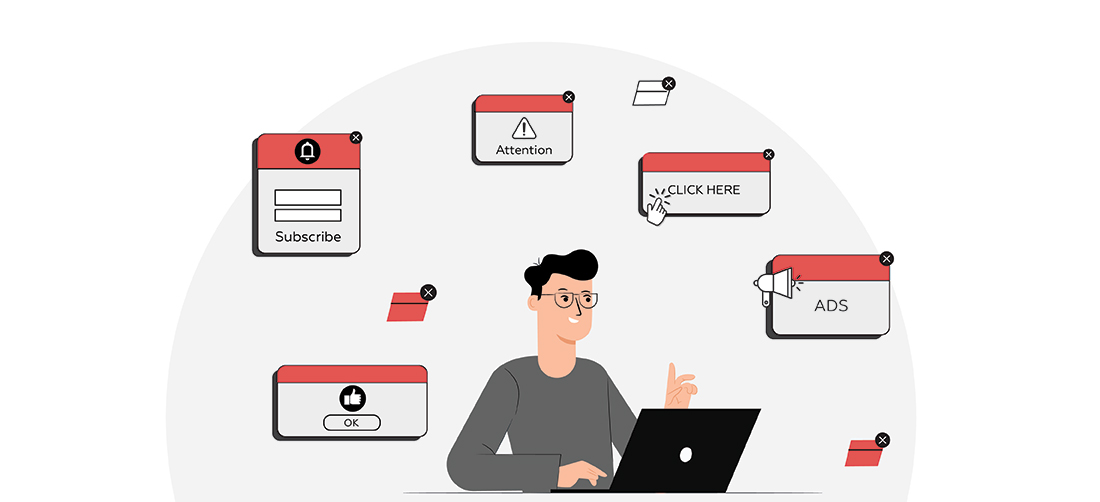Table Of Content
- 1. Introduction
- 2. Types of Native Advertising
- 2.1. In-feed Ads
- 2.2. Sponsored Content
- 2.3. Recommendation Widgets
- 2.4. Promoted Listings
- 3. Native Advertising Examples
- 4. Platforms Using Native Advertising
- 4.1. Facebook Advertising
- 4.2. Instagram Advertising
- 4.3. Twitter
- 4.4. LinkedIn
- 4.5. Snapchat
- 5. The Importance of Native Advertising
- 5.1. Benefits for Brands
- 5.2. Consumer Perception
- 6. Challenges of Native Advertising
- 6.1. Transparency Issues
- 6.2. Measurement and ROI
- 7. Conclusion
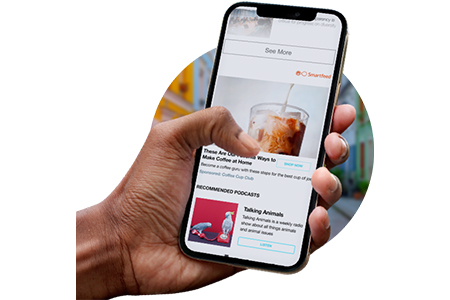
Ever noticed that social media post or article that looks like regular content but somehow shows up in the bottom left corner of the screen with a teeny "sponsored" label? That's native advertising. Unlike the jarring ads that jump out at you like loud banners and pop-ups, native advertising is such that it feels like it forms an organically cohesive part of your experience. It pops up like articles, videos, and other types of content along which you might already be looking.
Introduction
So, what is native advertising all about? It's about following the flow of the content you engage with. No bright shiny images or annoying pop-ups to get your attention but rather wrapping content that appears relevant right into the content you are trying to read. For instance, you are reading an article on travel tips and notice a sponsored list of getaway vacation spots recommended by a travel company. This approach feels more like a suggestion than a sales pitch, making it more trustworthy.
The native advertisement is the subtle form in which brands can achieve connectivity with their audience because it perfectly blends with the content. In terms of audiences, this will give less interruption but more value. This kind of ad is reforming how we interact with brands online-naturally, naturally, and effectively.
Moreover, with Facebook advertising and Instagram advertising brands can leverage native advertisement, reaching audiences naturally and boosting engagement without disruption.
Types of Native Advertising
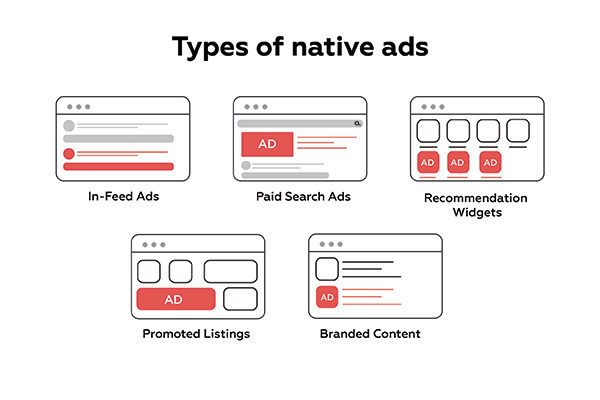
Native advertising comes in various formats, each tailored to fit naturally within the user’s online experience. Here are four key native advertising types you should know about:
In-feed Ads
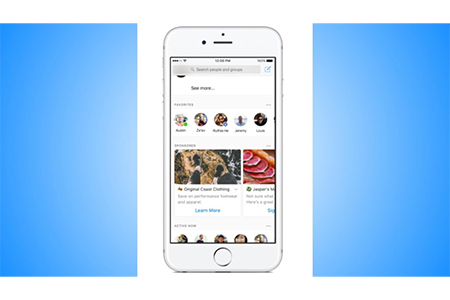
Appearing on-feed in several content, the in-feed ad can come at any point within a social media timeline or on the news website. This looks like organic posts or articles but carries the notion that they are sponsored. They are meant to be strategically made to blend with the content of the platform so that it may not prove annoying for others to view such an advertisement. An example of this is an in-feed ad that may appear to look like a regular photo post on Instagram, marked as "sponsored." On news sites, in-feed ads show a similar editorial article format. In-feed ads are effective for those brands that desire to get engagement based on the same reason of not being tedious for the users. This is one of the most active native advertising types nowadays.
Sponsored Content
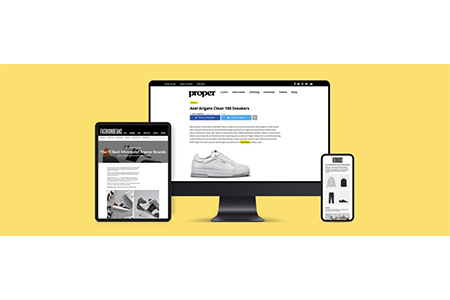
Sponsored content entails the partnership between the brands and the publishers in producing articles, videos, or other media that fits within the style and scope of the publisher's style and audience. This type of Native Advertising Type largely aims at value or storytelling intent rather than promoting something at par. A fantastic example is if a certain brand collaborated with a respected blog on a relevant, informative post about a topic involving the company's product or service, with a subtle mention of the said product or service. Sponsored content builds trust by providing relevant and interesting information, a more effective way to strike the audience than a traditional advertisement. This is Native Advertising- one of the main types, which nicely meshes with the content landscape.
Recommendation Widgets
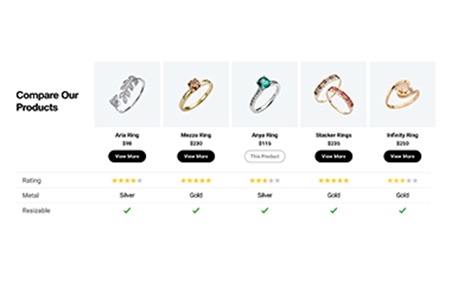
Generally found at the bottom of an article or in a sidebar, the recommendation widgets suggest other articles to readers. They are "You might also like…" or "Recommended for you" links that dissolve into the editorial recommendations of the website. These algorithms provide readers with far more relevant suggestions and increase the chances of engagement. For instance, after reading a travel blog for advice, a visitor may be prompted to view a related product or service advertisement. Recommendation widgets are a strong Native Advertising Type because they leverage users' curiosity while subtly exposing their brands.
Promoted Listings
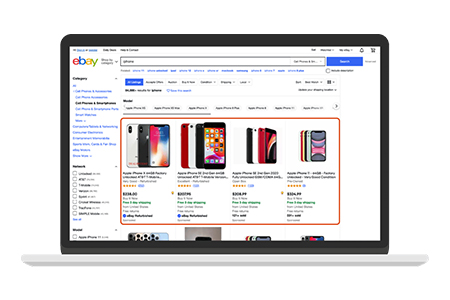
Promoted listings are widely found on e-commerce or service-based platforms in which users look for products or solutions. These advertisements look just like listings but are promoted to show at the top of a search, and would serve with words such as "sponsored" or "promoted." Promoted listings give brands availability in an organic way and are truly integrated with the searches that a user makes. For example, a promoted listing on a hotel booking website can bring a specific property up to the top when users search for hotels in a particular place. This is another good example of Native Advertising that ensures a non-disruptive user experience.
Each of these native advertising types is designed to offer users a more natural and less intrusive experience, allowing brands to engage effectively without disrupting the online journey. Native advertising continues to evolve, offering brands innovative ways to integrate into the user experience.
Native Advertising Examples
This type of native advertising blends with other content; it is excellent for brands that focus on sending messages without interrupting users. Here are a few unique examples:
Altran Engineering in the Financial Times
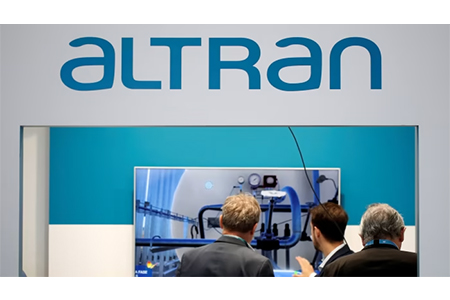
Altran Engineering partnered with Financial Times for the purpose of finding space for its work in the technological development promoted by the company. The sponsored content was basically about how industries are gearing up with AI and digital transformation. Fusing such technical information with industry-specific challenges, the article felt informative rather than promotional to get professionals in the innovation field on board. For this reason, it is a great example of well-targeted native advertising that was highly relevant to the Financial Times' audience.
Takeaway: Focus on relevant, industry-valuable content to attract a professional audience and earn respect.
Land Rover — A Mini Suspense/Action Film

Engaging a local, native ad concept is exactly what Land Rover did in order to take it to another level of creativity. Along with The Guardian, the company came up with a short mini-action movie that included all the Land Rovers in fantastic scenarios. The plot, being an adventure escape in a Land Rover, was very apt to the adventurous nature of the brand. The product was so interwoven into the plot that viewers barely registered it as an ad yet it kept them engaged without being obvious sales promotion.
KeyTakeaway: Tell creative stories to engage audiences subtly exhibiting your product.
Eni Energy on CNN
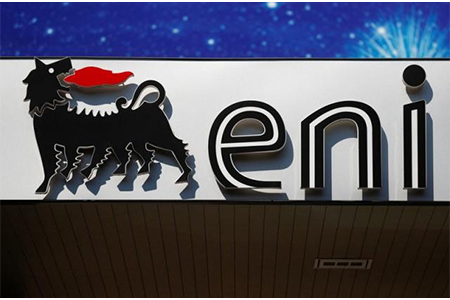
An energy company such as Eni collaborated with CNN to create a story around sustainability in its energy solution. The piece came out to feature efforts in cleaner sources of energy, portraying them as a thoughtful, sensitive forward-thinking company. Therefore, by mixing facts and figures together with expert commentaries, the content offered worthwhile insights into the global energy shift. It effectively brought Eni's brand message in front of CNN's global audience using relevant information in the form of not simply an advertisement but a source of industry knowledge.
Key Takeaway: Delivers valuable, informative content very close to the interests and values of the audience
Mercedes in The Washington Post

Mercedes-Benz recently ran a native ad campaign through The Washington Post where luxury came across as lifestyle. This sponsored content discussed how technology, design, and luxury merge within the cars of Mercedes, including autonomous drives and eco-friendly options. As part of the car section of the publication, this native ad offered value through its discussion of larger themes within automotive technology, making it a worthwhile read to the car enthusiast or tech-savvy reader. To these readers, Mercedes-Benz was able to drive in the message that it is, indeed a premium brand.
Key Takeaway: Align your native advertising so that it fits what matters most to your audience, and thus amplify the level of relevance and engagement.
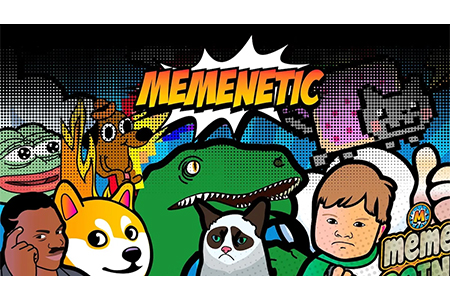
VentureBeat utilized a viral meme to market a tech product in a funny yet engaging way. A meme tied neatly to trending issues within the world of technology, relevant to the interest of the audience, and naturally fits into the contours of the content on the site. The subtle product placement made sure the meme wasn't too commercial, but indeed made people talk about the brand naturally and entertainingly. This campaign is an excellent example of how native advertising can harness the power of humor and viral culture to drive impact at the maximum.
Takeaway Key: Humor and trending topics as part and parcel of organic, shareable content that would resonate with your audience.
Allbirds in The New York Times
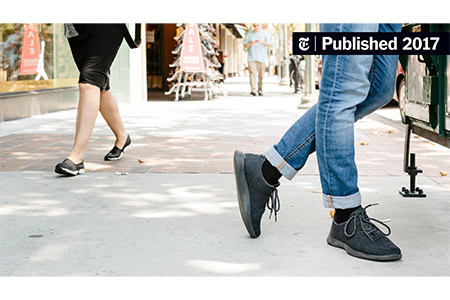
Allbirds, the eco-friendly footwear brand, partnered with The New York Times to execute a campaign for native advertising that featured the brand's commitment to sustainability. The story would be based on the platform revolving around the renewed material commitment at Allbirds in the middle of a much larger conversation on eco-friendly fashion. This meant that the effort provided content value to the readers and, further, put Allbirds in a position to be an eco-friendly brand with its message. Teamwork with a trusted publication ensured the credibility and prevalence of the brand's message.
Takeaway: Align brand values with the credibility of some of the more trusted sources of media.
Orbit Gum on CollegeHumor
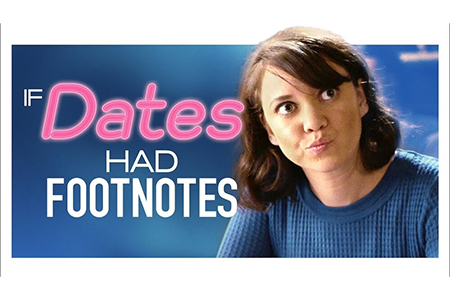
Orbit Gum was able to develop a light-hearted, fun sponsorship message for CollegeHumor. The hilarious video ad narrated great, exorbitant scenarios in which the funny fighting moments arose as a result of bad breath, which Orbit Gum solved. In a very entertaining-heavy piece for CollegeHumor, this ad blended in nearly seamlessly: no hard sell, yet definitely a gentle grind to the product benefit. Over and above humor and very slick and subtle product placement, Orbit managed to get its attention and, importantly for the brand, its remembrance.
Key takeaway: Use humor and fit your content organically in the platform to connect with the audience.
Platforms Using Native Advertising
Native advertising blends seamlessly with the user experience on social media platforms. Here's an overview of the major platforms using it:
Facebook Advertising
Facebook's native ads appear as sponsored posts within users' feeds, mimicking regular content. These ads are targeted based on user interests and behaviors, making them effective for both small businesses and large brands. The platform also offers Instagram advertising integration, expanding reach.
Instagram Advertising
Instagram is a highly visual platform that utilizes native ads within users' feeds, stories, and the Explore tab. Advertising in the Instagram app allows these sponsored posts to blend seamlessly with organic content, enabling brands to engage with users in a natural, non-intrusive way, while enhancing brand visibility and user interaction.
Twitter’s native advertising includes promoted tweets that blend into users' timelines. These ads are targeted by interests, location, and keywords, making it easy for advertisers to reach the right audience without disrupting the user experience.
For professionals, LinkedIn offers native ads in the form of sponsored content, which blends into the newsfeed. Advertising in the LinkedIn app tailors these ads to users based on their job titles, industries, and professional interests, making them ideal for B2B campaigns.
Snapchat
Snapchat’s native ads appear as sponsored snaps within the app, targeting users based on location, interests, and demographics. Advertising in the Snapchat app offers interactive ads that are popular with younger generations, providing fun and immersive experiences. Each of these platforms offers unique ways to implement native advertising, ensuring that ads fit naturally into users' browsing habits.
The Importance of Native Advertising
Native advertising has quickly become a key strategy for brands to integrate their messages seamlessly with user content. It provides an opportunity for brands to reach audiences in a non-intrusive way while enhancing the overall user experience. Here’s why it’s so crucial for modern marketing.
Benefits for Brands
Native ads offer significant advantages for brands, including increased brand awareness, engagement, and higher conversion rates.
- Brand Awareness: Native ads are usually better integrated with editorial content and hence can easily gain attention. Designed properly, they can be less perceived as an advertisement and hence more comfortable to read and consume without interruption and therefore have a higher chance of viewers remembering the brand.
- Engagement: Because native ads are well in line with the interest of the user in the content, they usually display a higher engagement rate. People are more likely to click on an ad if it fits their interests and has the feel of belonging within the content that they are enjoying.
- Conversion Rates: The other way native advertising increases conversion rates is that it will deliver the right content to users at the exact time they need it. Whether through informative blog posts or casual product endorsements, native ads make people act: sign up, sign up, try-to-buy, etc.
Consumer Perception
How consumers perceive native advertising can make or break its success. Native ads, if done right, can build trust with the audience.
- Influence on Trust: Native ads are designed to be less disruptive, which can lead to a more positive perception of the brand. Since they provide value (like entertainment or information), consumers often view them as helpful rather than invasive, fostering trust in the brand behind the ad.
- Consumer Interaction: Native ads are perceived as more relevant because they match the context of the platform. This alignment encourages consumers to interact with the content, which leads to a more authentic engagement compared to traditional, banner-style ads.
Challenges of Native Advertising
Despite its many benefits, native advertising also presents challenges that brands must overcome to be truly effective.
Transparency Issues
One of the primary concerns surrounding native advertising is transparency.
- Consumer Awareness: Many users are not immediately aware that the content they are engaging with is an advertisement. This lack of clarity can raise questions about the authenticity of the information and whether the ad is trying to manipulate it. Clear labeling of native ads as sponsored content or advertisements can help alleviate this issue.
- Ethical Concerns: Native ads, when not properly disclosed, can blur the line between editorial and advertising. This may lead to ethical dilemmas, especially if consumers feel misled by content that doesn’t clearly distinguish itself as promotional.
Measurement and ROI
Another challenge is accurately measuring the effectiveness of native ads.
- Tracking Performance: Unlike traditional display ads, native ads do not always come with easily measurable metrics. Since they blend into content, tracking the number of impressions or clicks can be difficult. This makes it hard to assess how well an ad is performing or its impact on the brand's goals.
- ROI Challenges: Evaluating return on investment (ROI) in native advertising is tricky. Because of its subtle nature, it’s not always clear how native ads directly lead to conversions or influence consumer behavior. This complicates budgeting decisions and optimization strategies for brands.
Conclusion
Native advertising is a powerful tool for brands—it blends seamlessly with content, making ads feel less intrusive and more engaging. This approach builds trust and captures attention, leading to better brand awareness and customer loyalty.
Excellent Publicity, a leading advertising agency creates impactful native ads that connect with audiences and keep your brand in focus. With our expertise in various advertising services, we’re ready to make your brand stand out.
Contact us to boost your visibility today.
FAQs
Native ad creation is all about becoming part of the content stream of the platform in such a way that virtually, it disappears and does not interrupt anything. Therefore, it results in higher engagement and enables brands to reach their target audience in a more organic and less intrusive way.
Native ads create trust as a means to nudge users towards the desired behavior through less intrusive relevant content, and users accept these ads because they build awareness for the brand and nudge their actions. Users would often interact with ads that would meet the tone and style used in the platform.
The native ad could, however, be beneficial to all businesses irrespective of their size and industries. This is attributed to their relevance and accurate targeting of the content presented on the platform appropriately, hence appealing to some audience segments.
Effective native advertising will be powered by value creation, consistency between the message and platform, and calls to action. Target the right audience, and make your message simple and engaging for interaction.


